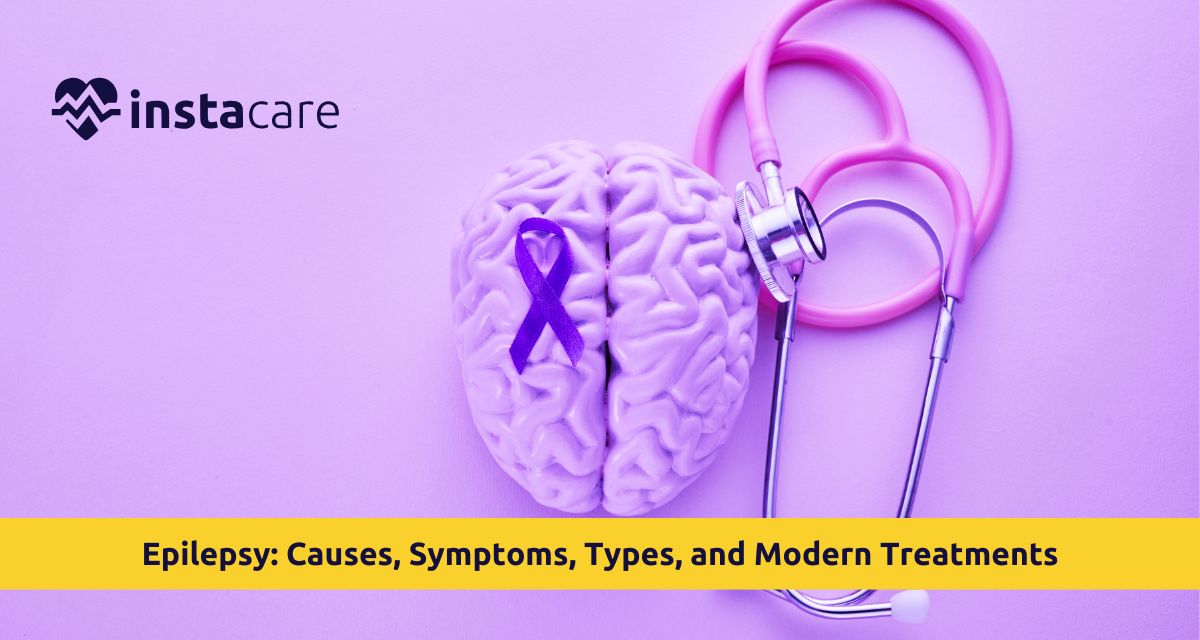Epilepsy is a worldwide neurological disease in the world with over 50 million victims worldwide. Epilepsy has been defined as repeated seizures after seconds of sudden electricity within the brain. Although epilepsy has the potential to affect anyone at any time, it is still not well understood and is still stigmatized in society. Epilepsy is easier to cure than ever because to medical advancements and increased epilepsy awareness, and most people are able to resume their regular lives.
What is Epilepsy?
This book helps us learn about what epilepsy is, why individuals develop it, how they will be different, and what treatments are currently available. Epilepsy is a chronic neurologic illness consisting of recurring and unprovoked seizures.
Seizures are pauses in the brain's activity and can be expressed as visible manifestations like convulsions, unconsciousness, sensory presentations, or other brief periods of unconsciousness.
It is not possible to have epilepsy after one seizure, but two or more unprovoked seizures most commonly lead to epilepsy diagnosis. Epilepsy is not psychiatric and never has anything to do with intelligence but can have an impact on mental and emotional health if left untreated.
Causes of Epilepsy
It results in diagnosis and treatment if one is aware of the epilepsy causes. In most cases, there is no cause, even though there are numerous reasons that might be the cause:
- Genetic factors: People are born with genes that make them prone to seizures.
- Brain injury: Infection, stroke, or head injury may be the reason for epilepsy.
- Trauma in utero: Malnutrition, intruterine brain ischemia, or intruterine infection may lead to epilepsy in children.
- Developmental conditions: Developmental delay and autism are not rarely co-morbid.
- Tumors and strokes: They are frequent precipitants in older age.
- Brain infections: Encephalitis or neurocysticercosis are worst offenders in some places.
Symptoms of Epilepsy
Epilepsy symptoms vary with the nature of the seizure and area of the brain. They are:
- Irregular confusion or forgetfulness
- Convulsions occurring on their own (tingling of hand or foot)
- Decreased consciousness or alteration in the level of consciousness
- Trance-like vacant empty staring attacks
- Psychic phenomena such as fear or déjà vu sensation
They have "auras" or warning symptoms before the seizure, e.g., unusual smell, taste, or visual warning. epilepsy vs seizure are unpredictable, breaking the continuity of daily life, work, and security.
Types of Epileptic Seizures
There are two types of epileptic seizures:
Focal (Partial) Seizures
They start in a region of the brain and may be:
- Simple focal seizures – Awareness is intact with possible abnormal sensation or movement.
- Complex focal seizures – Engage consciousness and repetitive movements like hand wringing or lip-smacking.
Read More: Celiac Disease: Symptoms, Causes, Diagnosis & Gluten-Free Treatment
Seizures Generalized
Brain hemispheres are both involved and encompass:
- Tonic-clonic seizures (Grand mal) – Dizziness and rigidity followed by convulsions.
- Absence seizures (Petit mal) – Periodic staring, most common in children.
- Myoclonic seizures – Jumps of legs or hands suddenly.
- Atonic seizures – Muscle weakness occurring suddenly and causing falls.
- Tonic and clonic seizures – Infrequent type with rigidity or rhythmic jerking without other features.
Classification of the types of seizures makes easy identification of the right treatment protocol by the doctors.
Diagnosis of Epilepsy
Correct diagnosis of epilepsy begins with correct medical history and neurologic examination. The following are utilized during the diagnosis:
- EEG (Electroencephalogram): Abnormal brain function is detected.
- MRI or CT scans: Detects abnormality or brain damage.
- Blood tests: Latent genetic or metabolic disease screening.
- Video monitoring: Seizure activity that will need to remain constant in the future.
Diagnosis is delayed, especially for not seizure-like or to differentiate epilepsy from other complaints such as fainting or migraine.
New Treatment Options
Epilepsy treatment has been so revolutionized in recent years and places the patient in a better position in regards to controlling his/her condition. Conventional options are:
Medications
Anti-epileptic drugs (AEDs) are drug of choice and will control 70% of the patients in such a manner that they will be able to seize seizures. They comprise some of the following most common ones:
- Lamotrigine
- Valproate
- Levetiracetam
- Carbamazepine
Depending upon seizure, age, and drug mechanism of action, type of drug and dose. Side effects are drowsiness,
dizziness, and mood change.
Epilepsy Surgery
Epilepsy surgery can be an alternative if the drug doesn't work. It is either removing or reshaping the area of the brain responsible for the seizures. It can be done to treat focal epilepsy.
Vagus Nerve Stimulation (VNS)
A tiny gadget is implanted just below the skin that delivers electrical signals to the brain through the vagus nerve. It is used to decrease seizure occurrences among patients who are a surgical candidate.
Ketogenic Diet
High fat and low carbohydrate diet has been proven to be extremely effective, particularly in drug-resistant childhood epilepsy.
Responsive Neurostimulation (RNS)
A brain machine is employed to observe for brain waves and delivers a small electric shock if it detects strange patterns so that a seizure doesn't occur. Long-term treatment of epilepsy can include therapy and constant monitoring.
Living with Epilepsy
Adjustment is made to living with epilepsy both in actual life and emotionally. How to live with it is regulated by the following:
- Seizure diary: Record epilepsy triggers, medication, and seizures.
- Normal sleep: Insomnia precipitates seizures.
- Avoidance of alcohol and drug use: They influence drugs and induce seizures.
- Safety first: Caution against driving, swimming, or machinery is needed most.
- Support groups: Group membership helps patients and families cope with it.
With treatment, the majority of people with epilepsy lead healthy, normal lives.
When to See a Doctor?
Call a doctor if:
- You have your first seizure.
- Seizures increase in number or severity.
- Side effects of drugs cannot be controlled.
- You become comatose for some unknown cause.
Being routinely up to date and in continuous contact with your neurologist are the secrets to keeping epilepsy under control.
Conclusion
Epilepsy is a complex but manageable neurological disorder. From discovering the various types of epilepsy to modern therapies, education allows families and patients to regain lives. Prompt treatment, the right epilepsy medication, diet adjustment, and ongoing medical therapy can restore quality to life. More awareness and treatment access are allowing individuals worldwide to overcome the stigmatization and hindrances this disease so often creates.
Please book an appointment with the
best Neurologist in Lahore, Karachi, Islamabad, and all major cities of Pakistan through
InstaCare, or call our helpline at 03171777509 to find the verified doctor for your disease.

